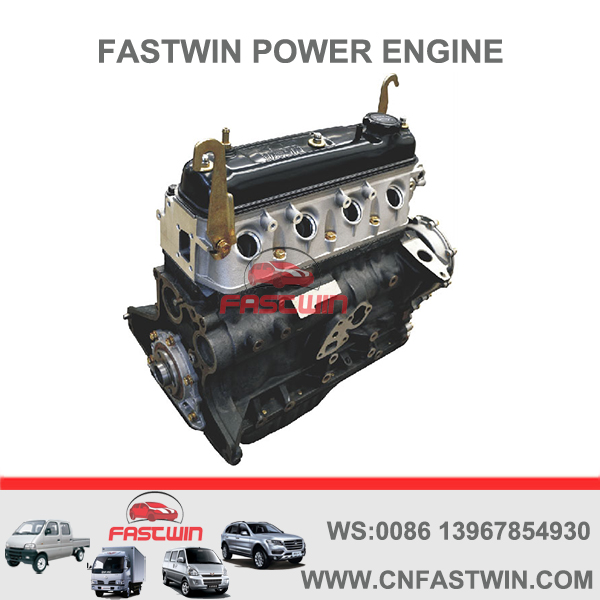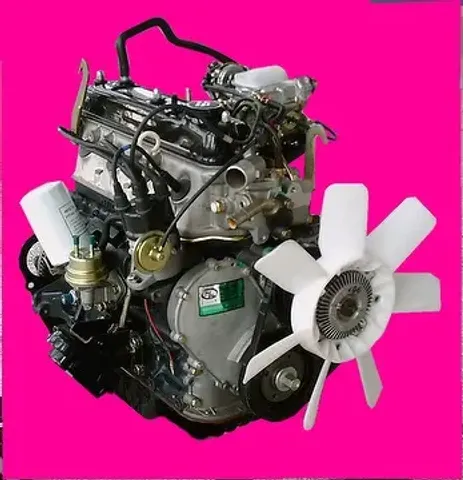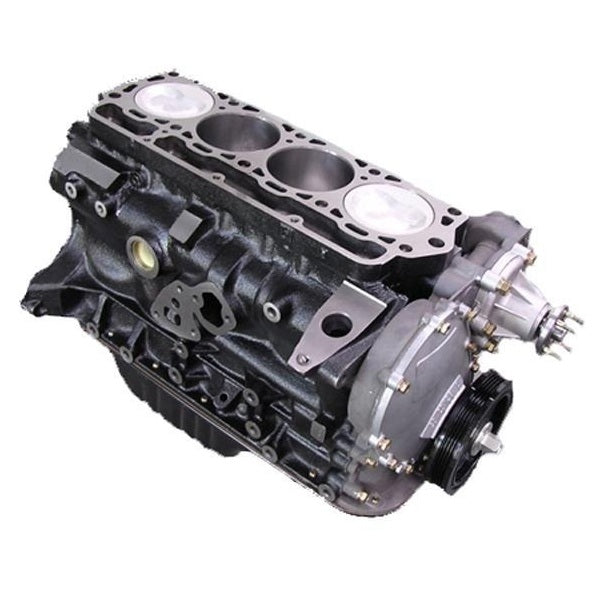Why the 4Y Engine Is Still Popular in Classic and Modern Vehicles
Why the 4Y Engine Is Still Popular in Classic and Modern Vehicles
Blog Article
Why the Engine Is the Ideal Selection for Performance and Performance in Your Auto
The engine remains a critical component in auto layout, mostly as a result of its substantial impact on both performance and efficiency. As advancements in modern technology enable smaller engines to deliver exceptional power while optimizing gas economy, the combination of functions such as turbocharging and crossbreed systems comes to be significantly vital. These developments not only enhance driving experience yet likewise address environmental concerns. The inquiry occurs: exactly how do these aspects coalesce to redefine our understanding of automotive efficiency? Discovering this balance exposes much deeper understandings into the future of engine layout.
Recognizing Engine Kind
Comprehending the different types of engines is vital for optimizing efficiency and effectiveness in automobile style. The primary engine types include internal burning engines (ICE), electrical engines, and hybrid systems, each offering distinct benefits and limitations.
Inner combustion engines, which can be additional categorized into fuel and diesel variations, depend on the burning of fuel to produce power. Gas engines normally provide greater RPMs and far better velocity, while diesel engines are known for their torque and fuel efficiency, making them excellent for sturdy applications.
Electric engines, on the various other hand, use electrical motors powered by batteries or fuel cells. They use instant torque distribution, leading to smooth velocity and reduced discharges. The effectiveness of electrical engines is significantly greater than that of ICEs, making them a prominent choice for eco-conscious customers.
Crossbreed systems integrate both interior burning and electric engines, leveraging the staminas of both technologies. They optimize fuel consumption by utilizing electric power at lower rates and switching over to gas or diesel for greater rates or larger tons.
Selecting the appropriate engine type is necessary for accomplishing preferred efficiency metrics and environmental sustainability in modern auto design.
The Impact of Engine Dimension
Engine size frequently plays a pivotal role in identifying an auto's performance and effectiveness. Normally measured in liters or cubic centimeters, engine size directly influences the power outcome and torque attributes of a car. Bigger engines commonly create more horse power, allowing better velocity and higher full throttle. This is particularly helpful in applications requiring durable performance, such as sporting activities automobiles and durable vehicles.
However, increased engine dimension typically associates with lessened gas performance. Bigger engines eat even more fuel, resulting in higher emissions and functional expenses. Subsequently, producers should balance the need for power with the demand for fuel economic situation. Smaller sized engines can deliver appropriate performance for day-to-day driving while promoting far better effectiveness, making them a prominent option in compact and mid-size cars.
Furthermore, developments in engine layout, such as turbocharging and direct fuel shot, enable smaller sized engines to attain power degrees comparable to their bigger counterparts. This pattern stresses the relevance of not only concentrating on engine size however likewise considering overall automobile layout and technology (4y engine). Ultimately, the impact of engine dimension on efficiency and efficiency highlights the need for customers to assess their particular driving demands and choices when picking a vehicle
Advanced Engine Technologies
Advancements in engine innovations have actually significantly improved the landscape of vehicle efficiency and effectiveness, structure upon the foundational ideas established by engine size. Especially, advancements such as turbocharging and straight gas shot have allowed smaller sized engines to deliver power levels previously related to bigger counterparts. Turbochargers compress air going into the engine, permitting for boosted power outcome without an equivalent boost in engine dimension, while direct shot enhances gas distribution, find enhancing combustion efficiency.
In addition, variable shutoff timing systems have become a crucial innovation, allowing engines to readjust valve procedure based upon driving problems. This versatility boosts both performance throughout velocity and fuel efficiency throughout travelling. Hybrid and electrical engine innovations additionally show the shift in automobile layout, integrating standard interior burning engines with electrical motors to optimize effectiveness while lowering discharges.
Additionally, advancements in products scientific research have actually led to lighter, much more resilient engine components, even more boosting efficiency and durability. The integration of innovative electronics and engine control systems additionally enables real-time adjustments, ensuring ideal performance throughout various problems. Collectively, these sophisticated engine modern technologies not just improve automobile performance yet likewise add to a more sustainable automobile future, demonstrating the recurring evolution of engine design.
Balancing Power and Efficiency
Striking a balance in between power and performance is crucial in contemporary automotive design as makers look for to fulfill significantly rigorous exhausts regulations while satisfying consumer demand for performance (4y engine). The challenge hinges on optimizing engine characteristics to deliver durable power outcome without compromising gas economic situation
To attain this balance, engineers utilize different approaches, such as turbocharging, which improves engine power forcibly in more air, enabling a smaller sized engine variation that enhances fuel efficiency. Variable valve timing innovations likewise play a considerable duty, making it possible for engines to adjust their efficiency qualities based upon driving conditions, therefore improving both power and effectiveness.
Furthermore, innovations in materials and manufacturing strategies have brought about lighter engine components, which minimize total vehicle weight and enhance fuel effectiveness without endangering power. Crossbreed technologies have also arised as a sensible service, combining standard interior combustion engines with electric powertrains to offer an increase in efficiency while keeping lower discharges.

Future Fads in Engine Style

In addition, the advancement of advanced materials, such as high-strength alloys and lightweight compounds, is set to change engine components. These products not just reduce weight but likewise enhance thermal effectiveness, consequently maximizing performance. Additionally, manufacturers are exploring variable compression ratios, permitting engines to adjust to various driving problems, enhancing both power outcome and gas economy.
Even more, the increase of expert system and visit their website equipment understanding in engine design is enabling predictive upkeep and real-time efficiency optimization. This technology can result in engines that self-adjust for maximum effectiveness based on driving patterns.

Conclusion
In conclusion, the engine offers as a crucial element in attaining optimal performance and effectiveness in contemporary lorries. The interaction between engine size and article source layout proceeds to develop, driving technologies that balance thrilling efficiency with environmental sustainability.
Additionally, improvements in engine layout, such as turbocharging and straight gas shot, permit smaller engines to achieve power degrees similar to their larger equivalents.Technologies in engine modern technologies have actually dramatically improved the landscape of automotive efficiency and efficiency, structure upon the fundamental ideas established by engine dimension. Turbochargers press air going into the engine, enabling for enhanced power output without a matching increase in engine size, while direct shot enhances fuel distribution, boosting burning efficiency.
Crossbreed and electric engine modern technologies further highlight the shift in automotive layout, integrating traditional inner burning engines with electric motors to take full advantage of efficiency while reducing discharges.
Collectively, these sophisticated engine technologies not only improve automobile performance however likewise add to an extra sustainable vehicle future, showing the ongoing development of engine layout. (4y engine)
Report this page